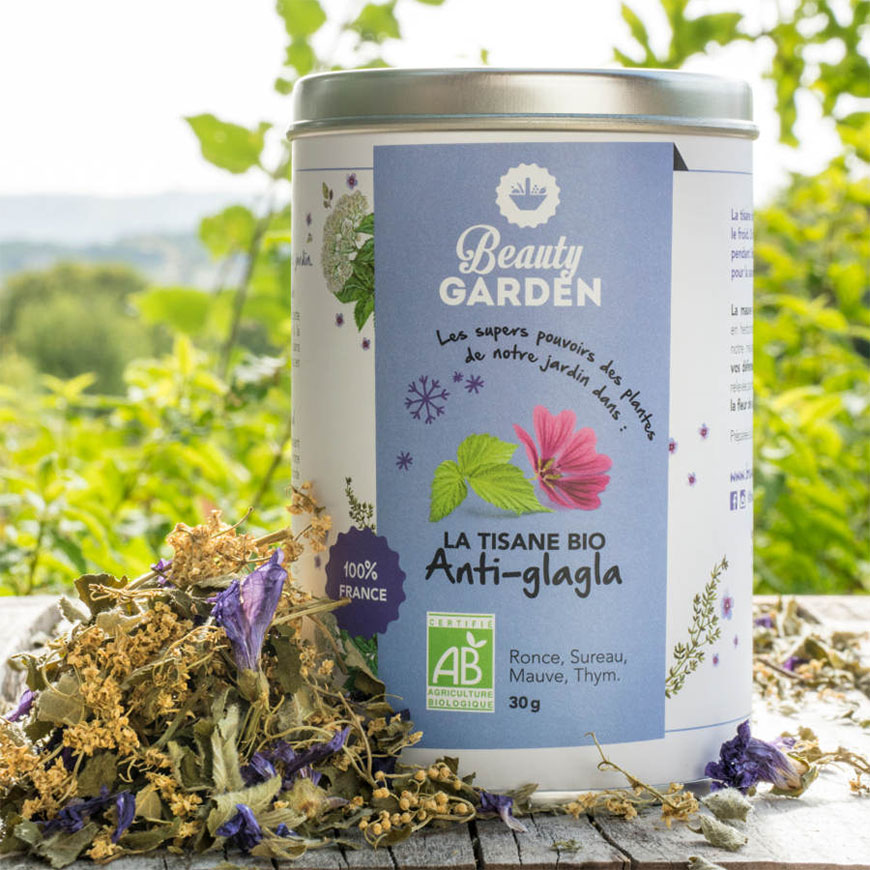
Thym - Étymologie :
Common name : common thyme (cultivated thyme, farigoule).
Botanical name = Thymus vulgaris.:
The term thyme comes from the Latin thymus, which in turn comes from the Greek word for fumigation herb.
Mythology and history :
We can find the first evocations of thyme in ancient Egypt, indeed, the Egyptians used it in their mummification rituals. For the Romans and Greeks, thyme was sacred. It was burned in places of worship, during rituals, but also in houses, to purify the air inside. Thyme was obviously already appreciated in cooking but also in baths.
In Greek mythology, it is said that thyme was born from the tears shed by Helen during her abduction by Paris. With each tear that fell from her eyes onto the ground, a clump of thyme was born. The Gods made it a blessed plant. It symbolizes courage.
Description botanique :
The common thyme is a plant of the family Lamiacées. Native to the Mediterranean basin, thyme likes dry, rocky, well-drained soil. It can withstand high temperatures. This sub-shrub can measure up to 30 cm. Its stems are grouped in a very dense bush. They are woody and thick at the base but herbaceous in the upper parts.
The leaves are small, oval and grayish green. The flowers are small, white to pink. The fruits are small dark brown seeds. The thyme is a perennial plant which blooms from June to August.
Properties & Virtues :
The molecules contained in thyme make it a good antibacterial, antiviral and antifungal. It is an antispasmodic and an expectorant, which means that it calms coughs and also helps to clear the bronchi. It thus makes it possible to fight against the infections of the respiratory tracts, such as bronchitis, and relieves the evils of throat. It is an excellent immune system simulant.
Composition :
The molecules contained in thyme make it a good antibacterial, antiviral and antifungal. It is an antispasmodic and an expectorant, which means that it calms coughs and also helps to clear the bronchi. It thus makes it possible to fight against the infections of the respiratory tracts, such as bronchitis, and relieves the evils of throat. It is an excellent immune system simulant.
Le thym commun et Beauty Garden
The molecules contained in thyme make it a good antibacterial, antiviral and antifungal. It is an antispasmodic and expectorant, which means that it calms coughs and also helps to clear the bronchi. It thus makes it possible to fight against the infections of the respiratory tracts, such as bronchitis, and relieves the evils of throat. It is an excellent immune system simulant.
We cut the upper herbaceous parts and install them immediately in our dryer. Once dried, we carry out the beating which consists in beating the stems to detach the small leaves. The stems are put in a bag and we hit them with a stick (very good activity to relax :) ). We then recover these small leaves, which are then sorted before being introduced into our mixture for the anti-glagla organic tea. Thyme is THE essential plant for winter infusions and the anti-Glagla tea has been created to be an ally of the cold seasons.
Bibliography :
Les Remèdes De Santé D’hildegarde De Bingen. (2013). Marabout.
C., D. M. (2022). Histoire universelle du regne végétal, ou, Nouveau dictionnaire physique & œconomique de toutes les plantes qui
croissent sur la surface du globe 1773 [Leather Bound]. Generic.
Mulot, M. (2015). Secrets d’une herboriste : La bible des plantes. DAUPHIN.
Thévenin, T. (2012). Les plantes sauvages : Connaitre, cueillir et utiliser. Lucien Souny.
Chevallier, A. (2017). Larousse des plantes médicinales : Identification, préparation, soins - 500 plantes décrites - 1000
photographies. LAROUSSE.
Barrau, V. & Fourié, Y. (s. d.). l’herbier d’une vie. Plume de carotte.
Lieutaghi, P. (2005). Le Livre des bonnes herbes ; Le Livre des Arbres, Arbustes et Arbrisseaux : Coffret en 2 volumes. Actes Sud.

